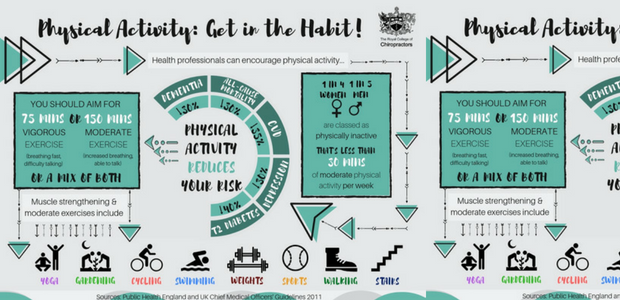The Link Between Pose And Pain In The Back: Ways To Make Certain Proper Positioning All Day Long
The Link Between Pose And Pain In The Back: Ways To Make Certain Proper Positioning All Day Long
Blog Article
Written By-Salisbury Patton
Keeping proper stance isn't just about staying up straight; it's about straightening your body in a manner that sustains your back and decreases the risk of back pain. The way you sit, stand, and relocate throughout the day can substantially impact your spinal health and wellness. Yet exactly how specifically can you guarantee great placement regularly, also throughout active days loaded with various tasks? Let's dig deeper into the subtle yet impactful adjustments you can make to your everyday regimen to keep your back pleased and healthy and balanced.
Importance of Correct Stance
Appropriate pose is important in preserving a healthy back and preventing discomfort. When you rest or stand with great posture, your back remains in alignment, minimizing pressure on your muscular tissues, ligaments, and joints. mouse click the next site allows the body to disperse weight evenly, preventing too much tension on certain locations that can result in pain and pain. By keeping your back effectively straightened, you can also boost your breathing and food digestion, as slouching can press organs and restrict their functionality.
In addition, keeping good stance can boost your overall look and positive self-image. When you stand tall with your shoulders back and head held high, you exhibit confidence and appear even more friendly. Good stance can also make you feel more invigorated and sharp, as it promotes correct blood flow and permits your muscular tissues to function successfully.
Including appropriate stance right into your daily routine, whether resting at a workdesk, strolling, or working out, is crucial for avoiding pain in the back and advertising total health. Keep in mind, a tiny modification in just how you hold on your own can make a considerable difference in how you really feel and operate throughout the day.
Common Postural Mistakes
When it involves keeping great position, several individuals unwittingly make common errors that can add to neck and back pain and pain. Among one of the most widespread mistakes is slouching or stooping over while resting or standing. This setting places excessive pressure on the spinal column and can result in muscle mass imbalances and discomfort over time.
An additional typical error is overarching the reduced back, which can squash the natural contour of the spinal column and trigger discomfort. Furthermore, going across legs while resting might feel comfy, but it can create a discrepancy in the hips and hips, leading to postural problems.
Making use of a pillow that's also soft or as well firm while resting can also influence your positioning and contribute to neck and back pain. Lastly, continuously craning your neck to look at screens or readjusting your placement frequently can stress the neck and shoulders. Being mindful of these common postural mistakes can help you preserve far better positioning and minimize the risk of back pain.
Tips for Correcting Positioning
To improve your alignment and reduce back pain, it's vital to focus on making small adjustments throughout your daily regimen. Begin by bearing in mind your stance. When sitting, ensure your feet are flat on the floor, your back is straight, and your shoulders are loosened up. Prevent slouching or leaning to one side. Use ergonomic chairs or cushions to support your reduced back.
When standing, distribute your weight uniformly on both feet, maintain your knees somewhat bent, and tuck in your pelvis. Involve https://consumer.healthday.com/cognitive-health-information-26/sciatica-news-594/got-sciatica-stay-active-and-start-early-on-physical-therapy-761886.html to sustain your spinal column. Take breaks to extend and walk around if you have an inactive task. Include workouts that reinforce your core and back muscle mass, such as slabs or bridges.
While resting, utilize a cushion that sustains the all-natural contour of your neck to preserve correct spinal alignment. Prevent sleeping on your belly, as it can stress your neck and back. By being mindful of these ideas and making small changes, you can gradually fix your placement and minimize pain in the back.
Conclusion
Remember, preserving excellent pose is key to avoid pain in the back and promoting back wellness. By being mindful of your placement, distributing weight uniformly, and involving your core muscles, you can lower pressure on your back and lessen the danger of pain and injury. Integrate ergonomic support, take regular breaks to stretch, and enhance your core and back muscles to maintain correct placement throughout the day. Your back will thanks for it!
